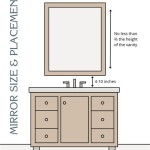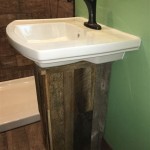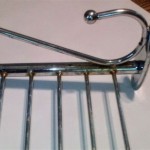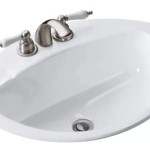How to Vent Your Bathroom Exhaust Fan Inside the House
While the conventional wisdom dictates venting bathroom exhaust fans directly to the exterior of a house, there are situations where venting inside the house might be the only feasible option. This could be due to factors like the bathroom's location within the house, structural limitations, or even a desire for a more aesthetically pleasing ventilation solution. However, it's crucial to understand the potential consequences and implement appropriate safeguards when choosing to vent a bathroom exhaust fan internally.
Understanding the Potential Consequences
The primary purpose of a bathroom exhaust fan is to remove moisture and odors generated by showering, bathing, and other bathroom activities. Venting this moist air directly outside prevents it from accumulating within the house, contributing to mold growth, mildew formation, and potential respiratory issues. Venting inside the house can result in these problems if not handled properly.
Implementing Safety Measures
If you must vent your bathroom exhaust fan inside the house, it's essential to implement safety measures to mitigate the risks. These measures include:
1. Utilizing a Dedicated Duct System
Instead of simply pointing the exhaust fan directly into the house, it's vital to use a dedicated duct system. This duct should be made of a moisture-resistant material like PVC or metal, and it should be routed to a location where the moisture can safely dissipate. Ideally, this location would be a well-ventilated area like a closet or attic.
2. Installing a Moisture Trap
A moisture trap, also known as a condensate trap, can be installed within the duct system to prevent moisture from collecting and potentially flowing back into the bathroom. These traps work by separating the water from the airstream, allowing the air to continue flowing while the water is collected and drained away.
3. Choosing a Fan with a High CFM Rating
The CFM (Cubic Feet per Minute) rating indicates the volume of air a fan can move. Opting for a fan with a high CFM rating will ensure efficient removal of moisture from the bathroom, even when venting internally. A higher CFM rating helps to counteract the potential for moisture buildup within the house.
4. Regularly Maintaining and Cleaning the System
As with any ventilation system, regular maintenance is crucial to ensure continued effectiveness. Clean both the fan and the ductwork periodically to remove dust, dirt, and accumulated moisture. This will help prevent clogging and ensure optimal performance of the system.
Alternatives to Internal Venting
While venting inside the house can be a viable solution in specific circumstances, it's always preferable to vent the exhaust fan directly outside. If internal venting is not your preferred approach, consider the following alternatives:
1. Creating an Exterior Vent
If structural limitations are preventing an exterior vent, it might be possible to create one by adding a small window or dormer. This would allow for direct ventilation to the exterior, eliminating the need for internal venting.
2. Utilizing a Ductless Exhaust Fan
Ductless exhaust fans are designed to be installed directly into the ceiling or wall without the need for ductwork. These fans often feature a built-in exhaust port that can be directed outside the house. This can be an excellent solution for bathrooms located in difficult-to-vent areas.
3. Installing a Heat Recovery Ventilator (HRV)
An HRV is a more advanced ventilation system that exchanges air between the inside and outside of the house while recovering heat from the exiting air. HRVs offer greater efficiency and can manage moisture levels more effectively compared to standard exhaust fans. While more expensive than a standard fan, they can provide a more comprehensive solution for ventilation and moisture management.
Remember, the most appropriate ventilation solution will depend on your house's specific needs and circumstances. Carefully consider the potential risks and benefits of venting a bathroom exhaust fan inside the house before making a decision. Consulting with a qualified HVAC professional can help you determine the best approach for your situation.

How To Vent A Bathroom With No Outside Access

Blog

How To Use An In Line Exhaust Fan Vent Two Bathrooms Diy Family Handyman

Bathroom Ventilation 9 Easy Ways To Improve Bob Vila

House Ventilation 101 A Homeowner S Guide To Continuous Running Exhaust Fans Center For Energy And Environment

What Extractor Fan Do I Need For My Bathroom Blog World

Invisible Ventilation For A Better Bath Fine Homebuilding
Where Do Bathroom Fans Vent To Quora

5 Reasons Bath Fans Have Such Poor Air Flow Energy Vanguard

How Long Can A Bathroom Exhaust Fan Run Small Guide







